Gargano’s capital always surprises me. Tall white cliffs drop into the clear blue waters of the Adriatic Sea, and quiet pebble beaches hide beneath thick green forests. It’s one of those rare Italian places that feels wild and inviting at the same time, packed with real nature—craggy coastlines, olive trees, and that soft scent of Mediterranean brush.
When I walk along the cliffs, I get the best views of the sea and the dramatic shapes of the land. No wonder travelers keep falling in love with this place.
What I notice most about the Gargano Peninsula is how untouched everything feels. The beaches stay clean and easy to enjoy, with rocky and sandy spots to choose from.
One of my favorite ways to spend the day? I wander from cool, shaded woods down to secret coves, stopping for a swim in the calm Adriatic or just sitting to watch the sun light up the cliffs.
Whenever I talk about Italy’s best coastal escapes, Gargano always makes my list. There’s a real sense of discovery here—small fishing towns, hidden beaches, and walking trails that show off a side of Italy most travelers never even imagine.
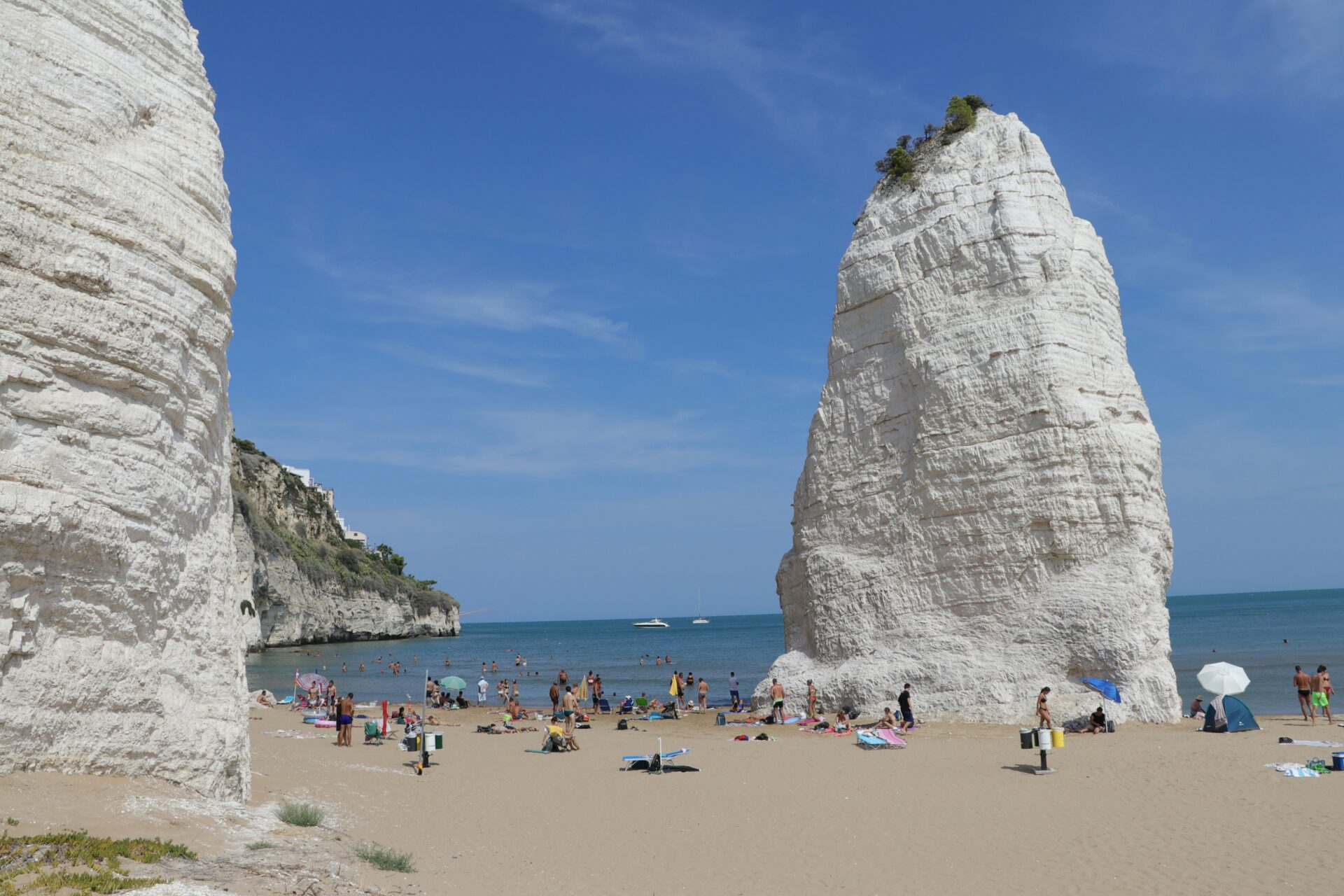
Gargano’s Iconic Cliffs and Coastal Wonders
Sheer white cliffs, hidden pebbled beaches, and turquoise waters—these sights greeted me all along the Gargano Peninsula. The area draws travelers with its scenery, quirky coastline, and the historic charm of towns like Vieste.
Towering Cliffs and Dramatic Landscapes
Driving along the Gargano coast, I watch the landscape shift fast. One moment, I’m staring up at sheer limestone cliffs; the next, I’m admiring ancient olive groves.
Monte Gargano rises behind everything, but the coastline steals the show. Towering white cliffs slice into the Adriatic Sea, making a rugged edge around the peninsula.
These cliffs, often over 100 feet tall, are dotted with caves and natural arches. Some caves you can only reach by boat, and local tours leave every day from Vieste.
The sunlight changes the rock from pale gray in the morning to glowing gold by sundown.
Key highlights to look for when exploring the cliffs:
| Location | Feature |
|---|---|
| Baia delle Zagare | Sea stacks & caves |
| Vignanotica Beach | Towering white cliffs |
| Mattinata Coast | Rocky promontories |
The landscapes here never feel flat or dull. When I walk the coastal paths, I stumble on hidden picture spots around every bend.
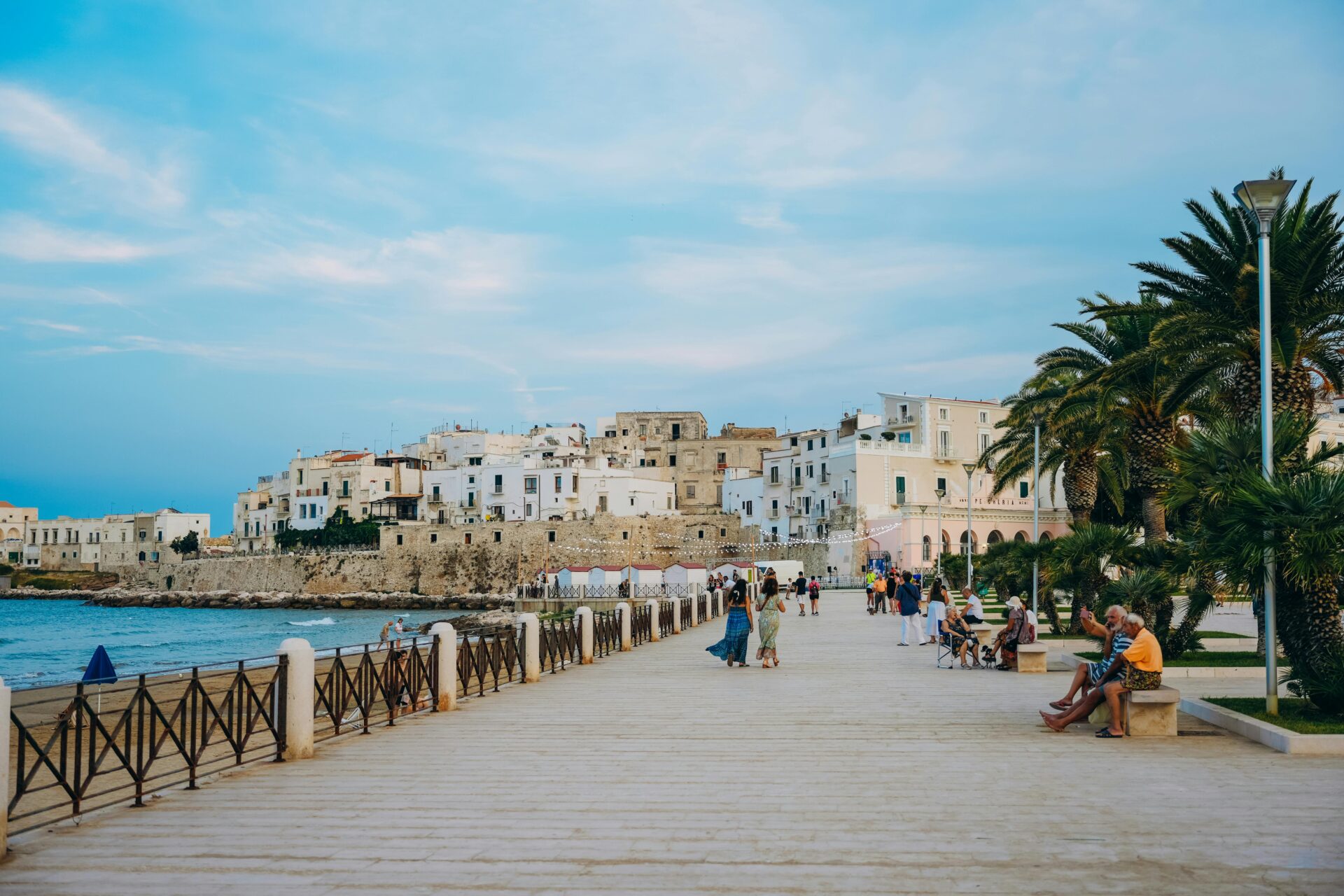
Adriatic Views and Hidden Coves
Gargano’s Adriatic coastline gives some of the most stunning views in southern Italy. I love finding small, quiet coves with white pebbles and crystal-clear water.
Many beaches hide behind narrow trails or can only be reached by boat, which makes each discovery feel like a little victory. Vignanotica Beach is a great example. I once hiked down a winding path from an olive grove carpark and ended up alone on a pebbly shore, with cliffs rising on both sides.
The sea here stays calm most days. On sunny mornings, you can see straight down to the rocky seabed. Snorkeling is fantastic near the cliffs where the water is deepest and clearest.
Several coastal towns, like Peschici, have their own secret beach spots if you’re willing to wander off the main routes.

Vieste: Jewel of the Peninsula
Vieste stands out as both the capital and the heart of the Gargano Peninsula. The town sits high on a chalky headland above the sea.
When I walk through Vieste’s old center, I weave between whitewashed houses and end up on cliffs with sweeping Adriatic views.
I always recommend climbing up to the Vieste lighthouse at sunset—hearing the waves crash below makes the whole thing unforgettable. Sometimes, you can spot the Tremiti Islands across the blue.
Vieste’s beaches, like Spiaggia del Pizzomunno, are wide and sandy, a sharp contrast to the rocky shores nearby.
Restaurants here serve up fresh seafood with local olive oil. I find the evening buzz in the main piazza hard to resist, especially after a long day exploring the coast.
Vieste really feels like the perfect base for adventures all over Gargano.
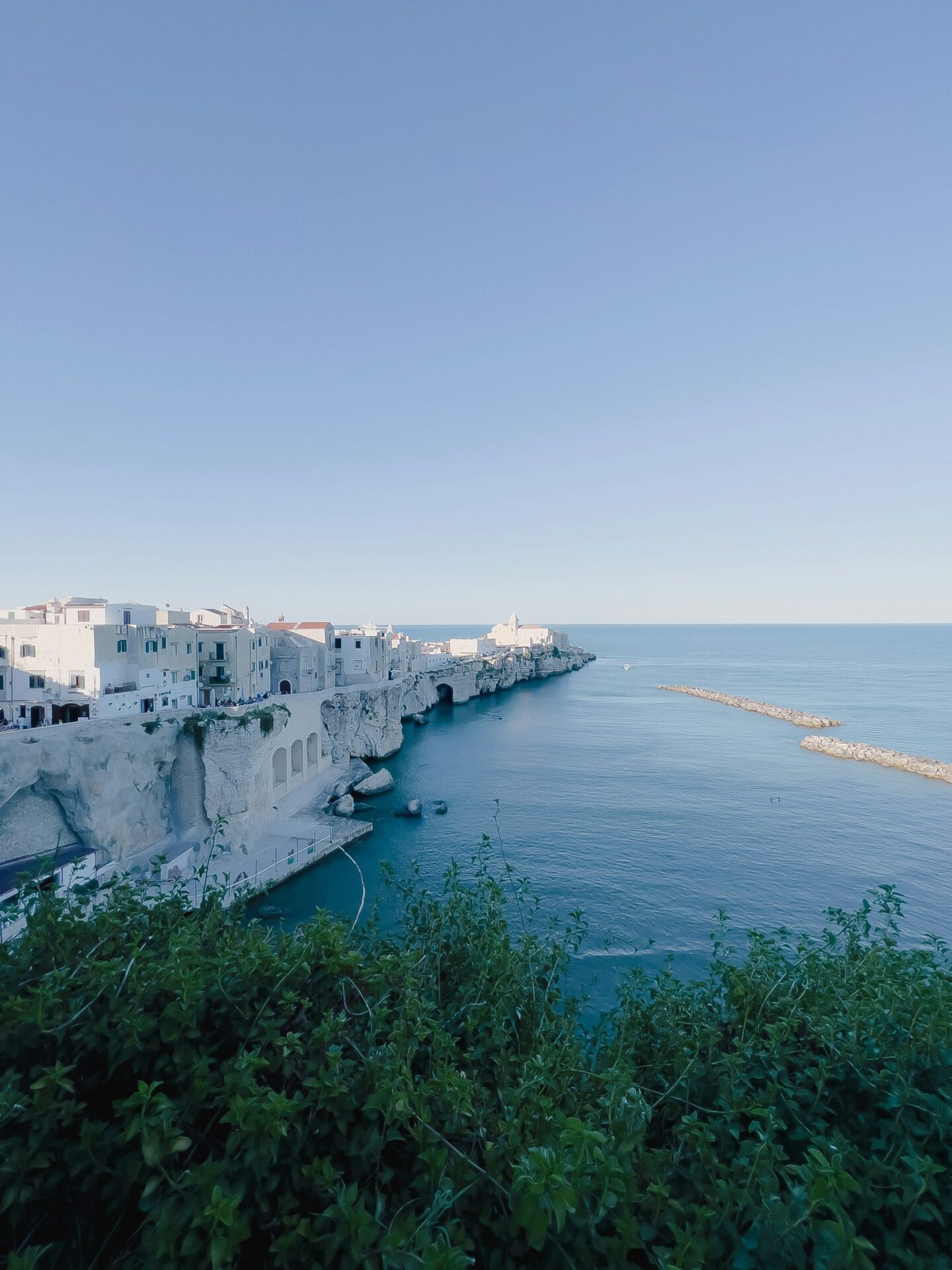
Sun-Kissed Beaches and Seaside Escapes
Gargano’s coastline mixes sandy shores, scenic cliffs, and inviting seaside spots. Every visit, I discover peaceful retreats, clear waters, and lively beach life right beside welcoming coastal towns.
Peschici and Rodi Garganico: Beachfront Retreats
When I wander through Peschici, its dramatic cliffs immediately grab my attention—they seem to dive straight into the blue Adriatic. The whitewashed streets are full of cafés and gelaterias, perfect for a cool treat after a hot beach day.
Peschici’s main beach, Baia di Peschici, curves gently beneath the old town. Soft golden sand and shallow, safe waters make it a favorite for families and swimmers.
I love the laid-back vibe here, especially when the sun disappears behind the hillside.
Just a short drive away, Rodi Garganico feels just as inviting. The beaches here, like Spiaggia di Levante, offer wide sandy stretches bordered by lush orange and lemon groves.
In summer, beach clubs and seafood trattorias line the shore, so I can grab lunch just steps from the water.
Quick Facts Table
| Town | Popular Beaches | Vibe |
|---|---|---|
| Peschici | Baia di Peschici | Clifftop views, cozy |
| Rodi Garganico | Spiaggia di Levante | Spacious, lively |
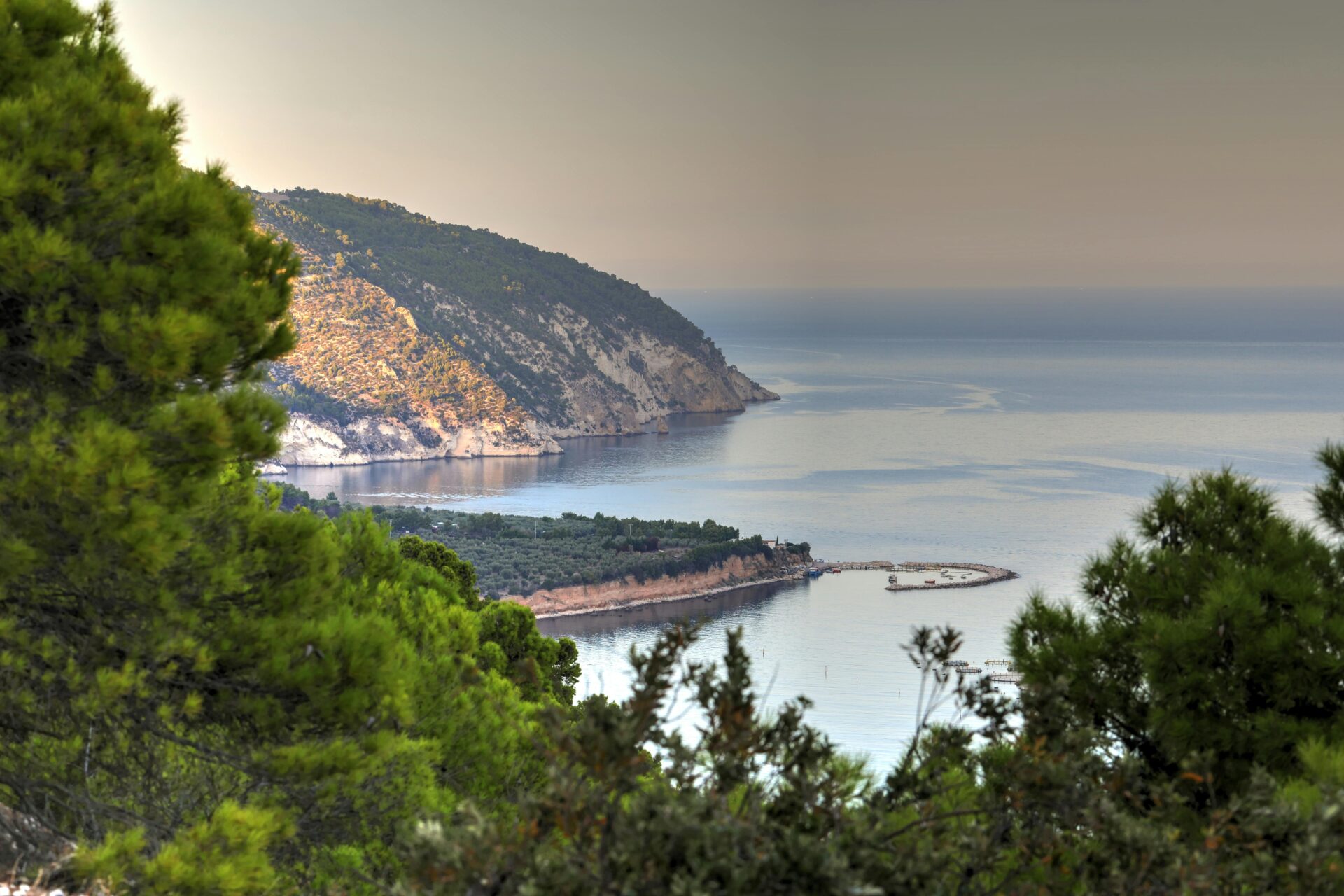
Crystal Waters and Secluded Sands
Some of Gargano’s best spots hide between the cliffs—small, hidden beaches and pebble coves that take some effort to reach but are so worth it. I always pack sturdy shoes and plenty of water, knowing a forty-minute hike or a quick boat ride will get me to almost empty beaches.
Baia delle Zagare is probably my favorite. Towering limestone stacks rise out of turquoise water, and white pebbles cover the small shore. The path down winds through thick pine trees and gives me a killer view before I even hit the sand.
These secret spots are perfect for swimming, snorkeling, or just soaking up the silence. Every time I find a new cove, it feels like stepping into another world—far from crowds and noise.
Recommended Activities
- Bring snorkeling gear for the clear waters
- Visit early in the morning for more privacy
- Pack snacks and water—some coves offer zero services
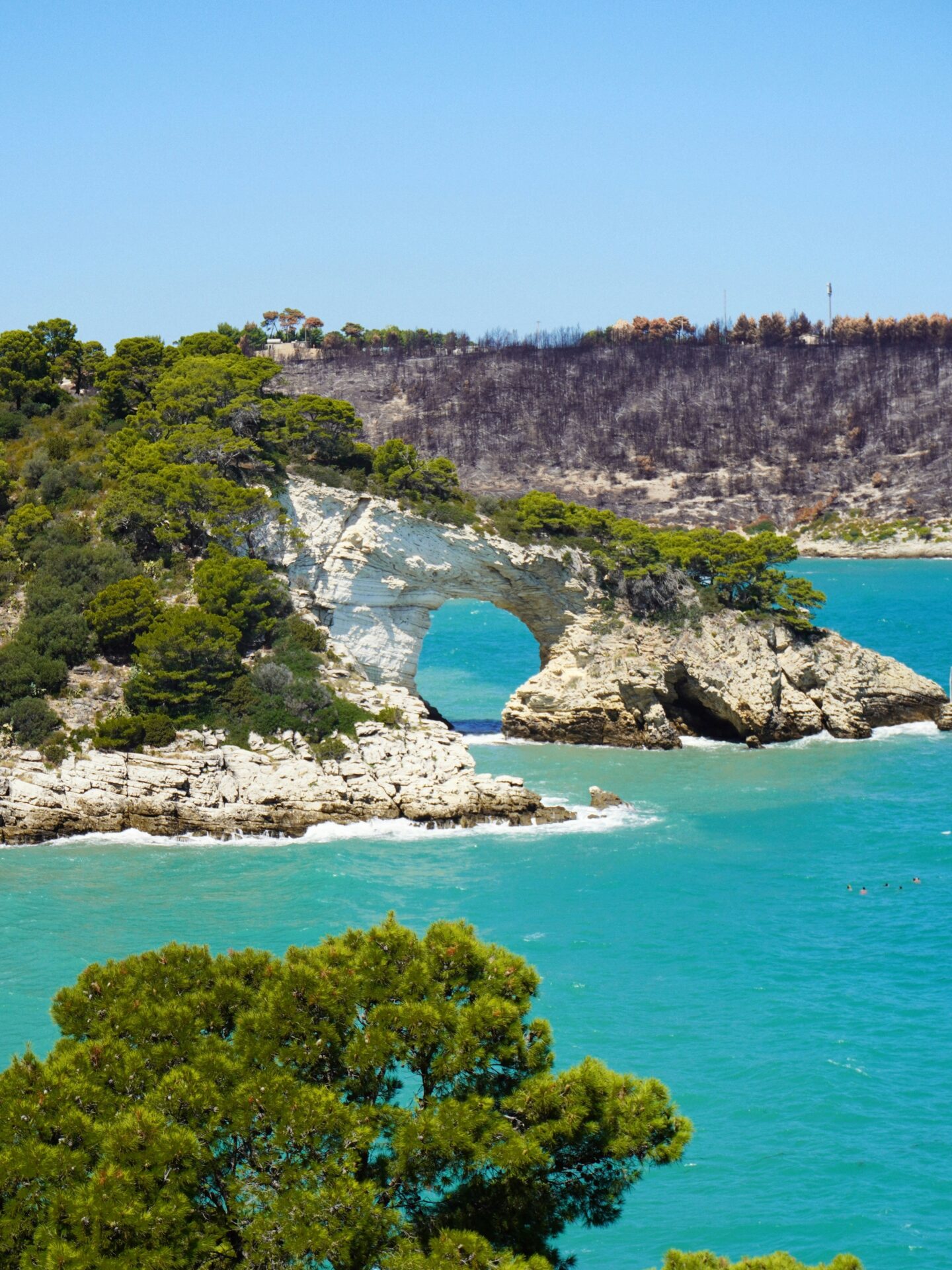
Manfredonia and the Southern Coast
Manfredonia usually marks the starting point of the southern Gargano coast. Unlike the northern towns, the beaches here stretch long and flat with soft sand that runs right alongside the city.
When I visit, I like walking the lively promenade, where locals gather for evening strolls and fishing boats bob in the harbor.
The city beaches work well for anyone who wants easy access and plenty of space. It’s simple to rent a sunbed or grab a quick coffee at a beach bar.
For a quieter scene, I sometimes drive farther south to Siponto, where sandy dunes and grassy patches give a wilder feel.
Manfredonia’s mix of city life, history, and big beaches makes it easy for first-timers to get a taste of the Gargano peninsula. Swimming here is relaxed, with gentle waves and views across the sparkling Adriatic.
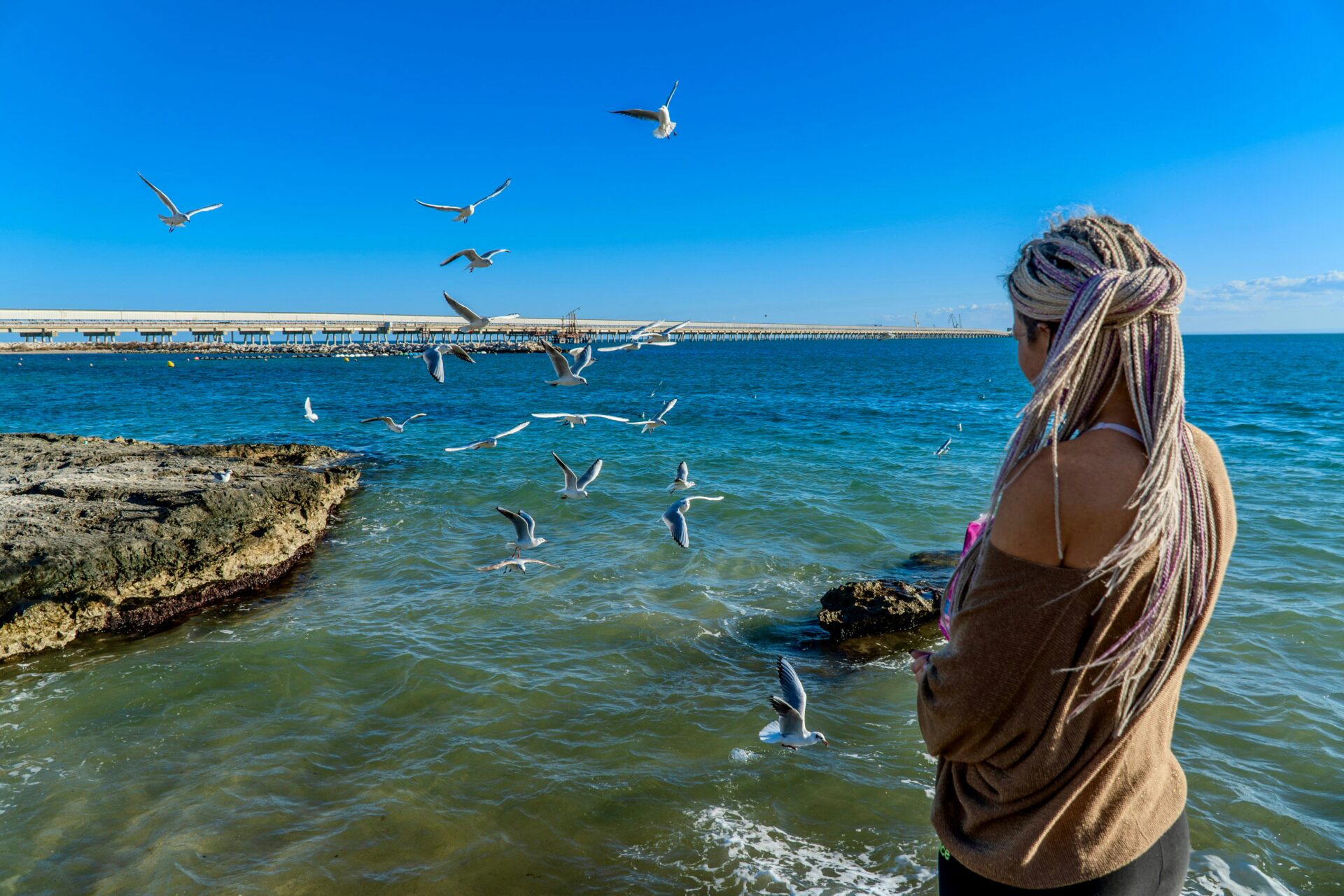
Nature’s Playground: Exploring Gargano National Park
Gargano National Park brings together ancient forests, rugged mountains, and crystal-clear waters. Visiting this area, I find each landscape more inviting than the last.
Umbra Forest: The Heart of Green Gargano
Stepping into the Umbra Forest feels like entering a living, breathing world of green. Tall beech and oak trees stretch for miles, shading trails with thick leaves.
Sunlight sneaks through, making patterns on the mossy forest floor. Wildflowers pop up everywhere.
The sounds here are soothing—birds calling, leaves rustling, and sometimes the quiet snap of a deer nearby.
Marked paths make it easy to explore, even if you’re new to the woods. The air feels cooler and fresher under the tree canopy, which is a blessing on hot days.
A highlight for me was visiting one of the old charcoal kilns in the forest. It gave a peek into traditional life here.
If you love birdwatching or just want peace away from crowds, this part of the park is a must.
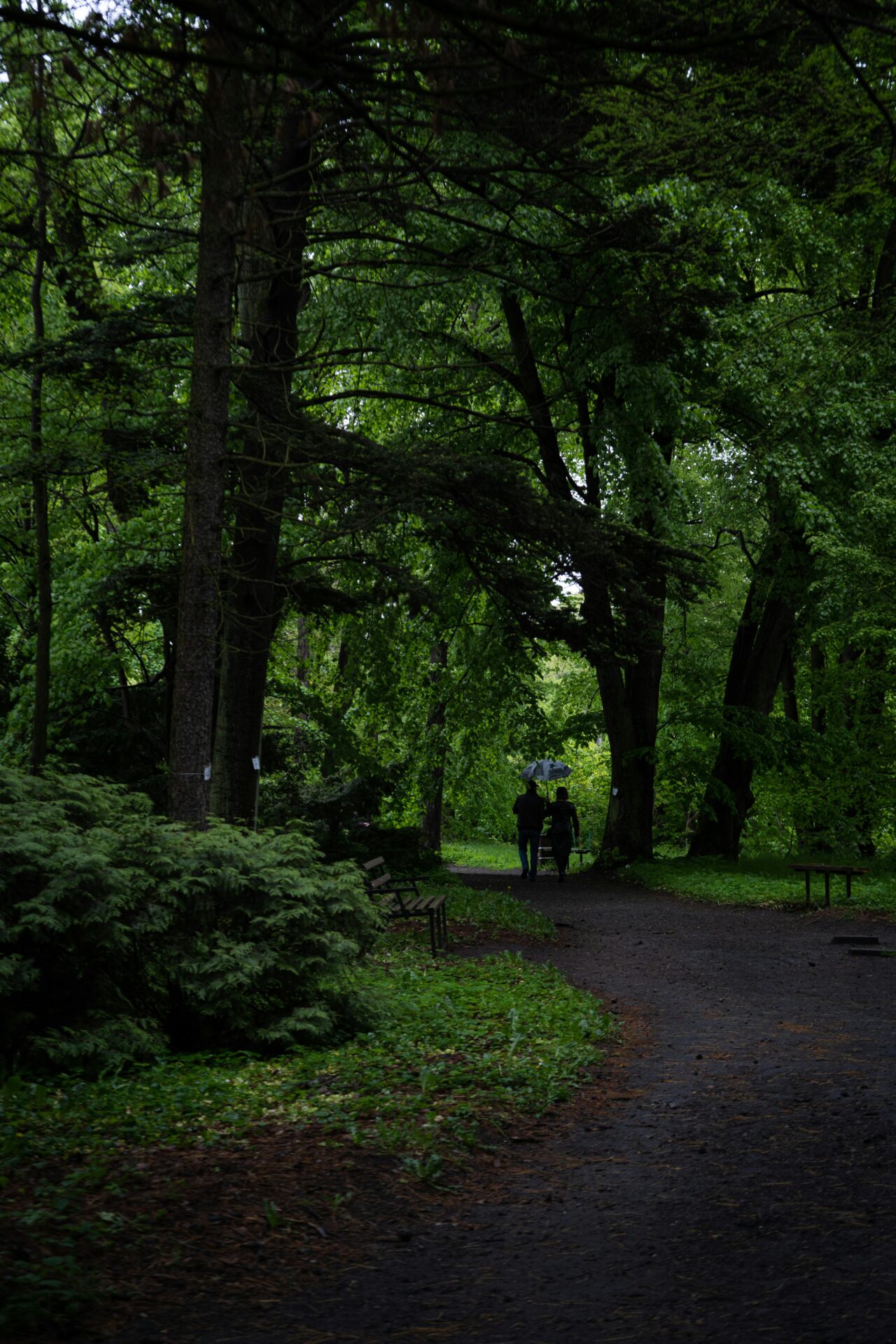
Hiking Trails and Outdoor Adventures
Hiking in Gargano National Park opens up so many choices. Trails wind through rocky cliffs, pine forests, and meadows dotted with orchids.
One of my favorite routes follows the coast, with the bright blue Adriatic on one side and wild white cliffs on the other.
If you want a challenge, try the Monte Sant’Angelo trail—it climbs high above the park and the views are breathtaking.
I meet locals and travelers along the way, and everyone seems happy to share a tip or story. It makes the experience feel more personal.
Besides hiking, biking and horseback riding are big here. Trails are well-marked, and local guides often help visitors find hidden gems.
For anyone who loves being active in nature, Gargano’s varied terrain is tough to beat.
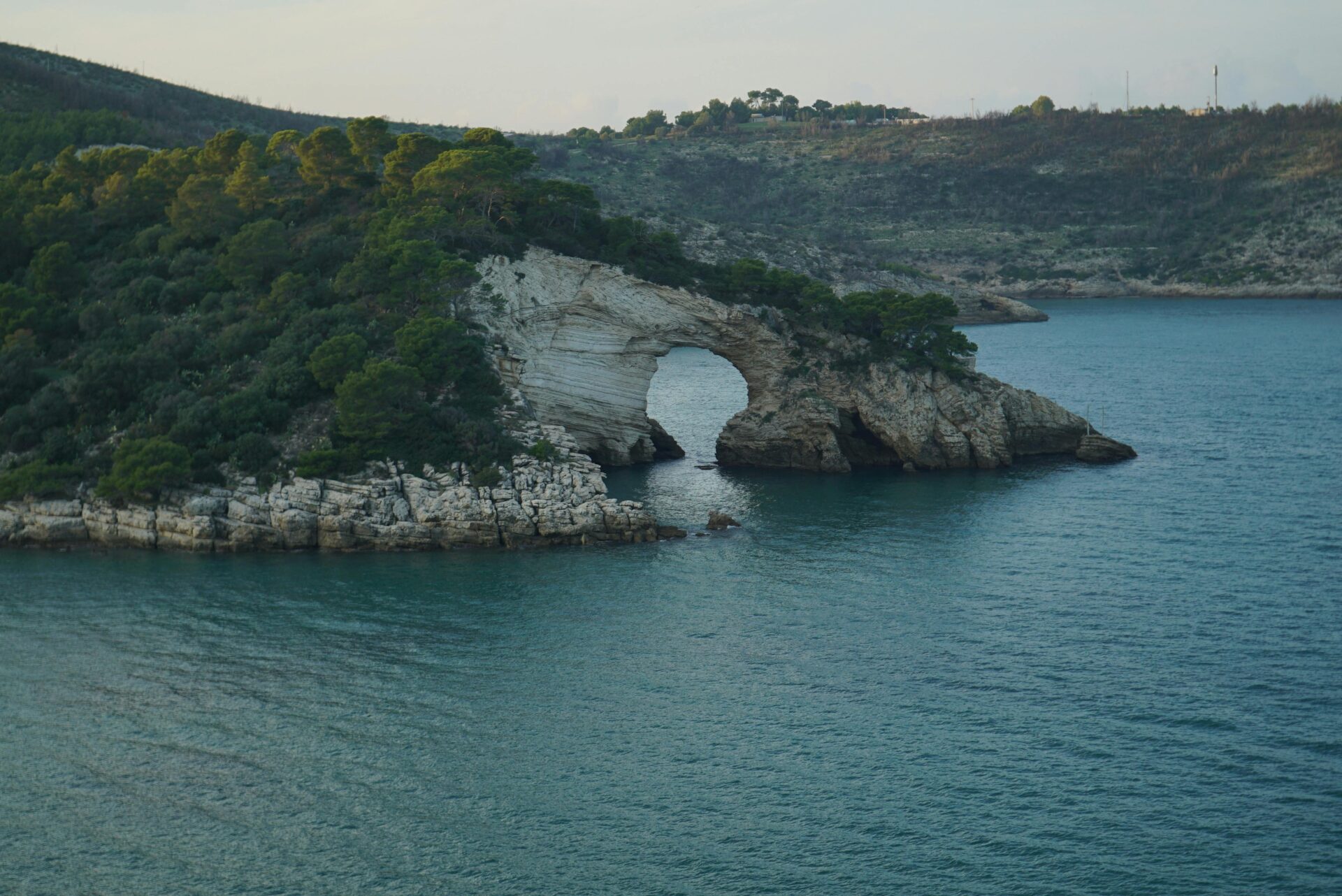
Tremiti Islands: Marine Paradise
A short ferry ride whisks me out to the Tremiti Islands, also called Isole Tremiti. The water here almost looks unreal—so clear and blue, with schools of fish visible right from the boat.
Swimming and snorkeling around the islands quickly become the highlight of my trip.
I discover small coves and pebble beaches, perfect for relaxing after a morning hike or swim. The sea caves around San Domino are a big draw for boat tours.
I join one and can’t believe the underwater views.
Diving here is popular, thanks to all the marine life and old shipwrecks offshore. Even if you just want a peaceful beach day, Tremiti has some of the cleanest, quietest beaches I’ve found in Italy.
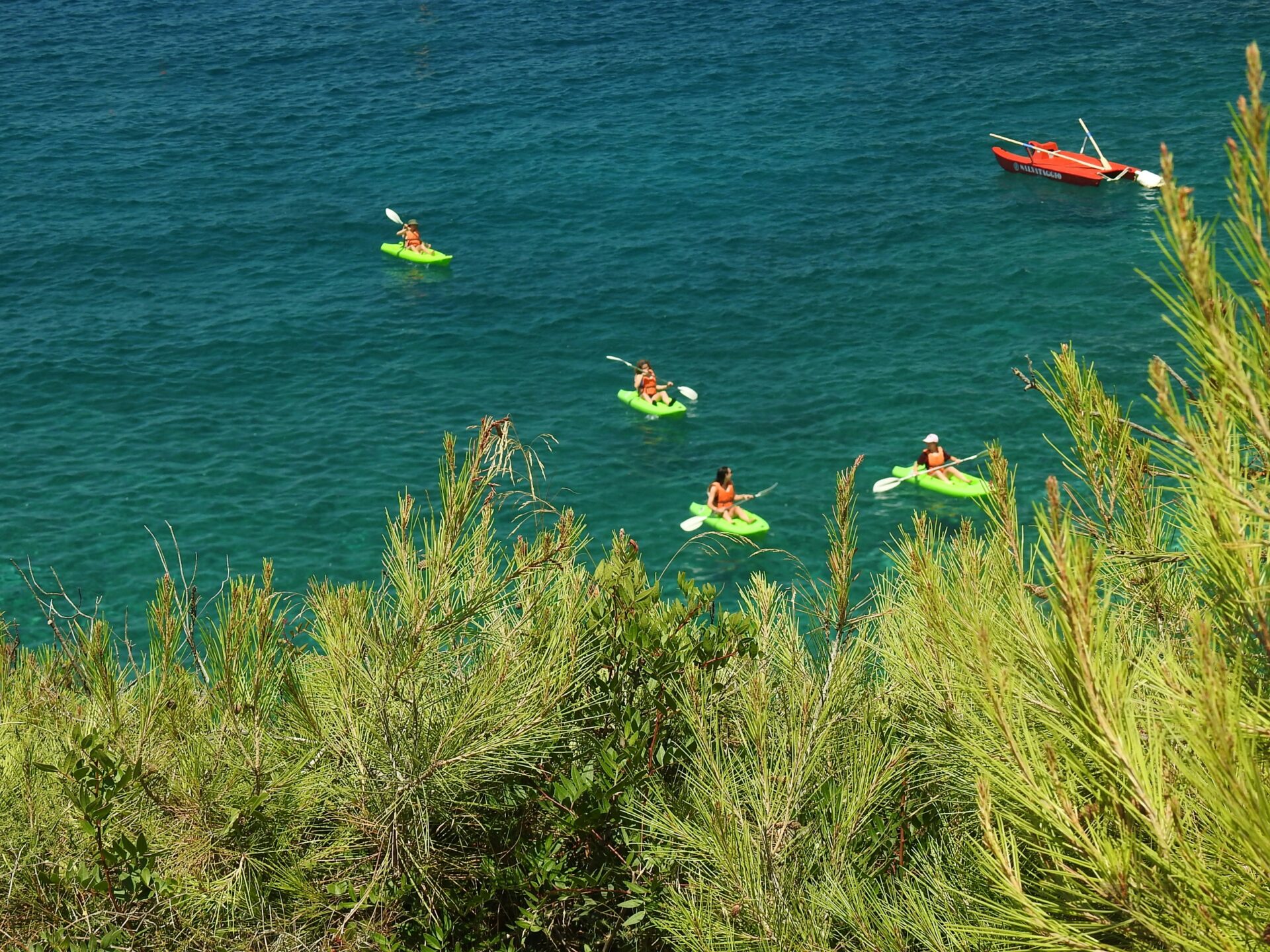
Wildlife and Unspoiled Nature
Gargano National Park is one of the best spots I’ve found to spot wildlife in southern Italy. Early mornings are especially rewarding—you might see wild deer, foxes, or even wild boar if you move quietly.
The calls of woodpeckers and nightingales follow me while I hike.
There are over 170 bird species in the park, from tiny finches to big hawks soaring over the cliffs.
In spring, fields fill with wild orchids and rare plants you won’t see anywhere else.
Bring binoculars and a camera if you can. Nature lovers will have plenty to spot, and the sense of untouched landscape sticks with you long after you leave.
The park’s strict preservation keeps these habitats thriving, so every visit feels special and full of little discoveries.
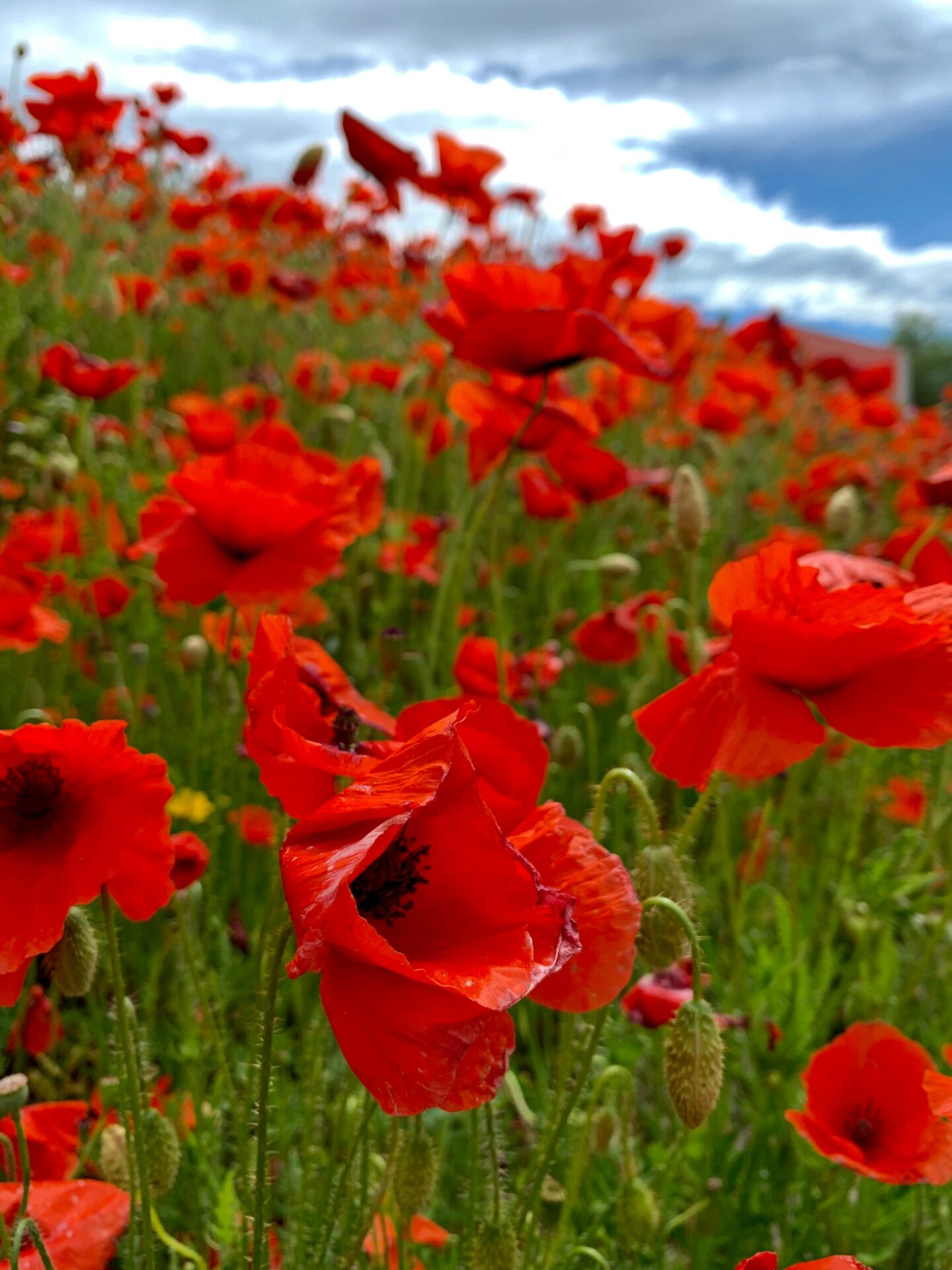
Charming Towns and Rich Heritage
The Gargano region mixes dramatic landscapes with a deep sense of history. Walking its streets, I see living traditions, centuries-old churches, and traces of ancient civilizations that connect Puglia to bigger Italian and European stories.
Old Towns and Cultural Gems
One of my favorite ways to experience Gargano is by exploring its old towns. Vieste stands out for its white limestone houses stacked atop sea cliffs, with alleys that twist and surprise at every turn.
When I stroll along the narrow lanes, there’s always the scent of the sea and the sound of church bells ringing.
Nearby, Peschici is another gem perched above the Adriatic. It feels like stepping inside a postcard—whitewashed walls, balconies with flowers, and small trattorias serving local seafood.
Both Vieste and Peschici keep local traditions alive, from handcrafted ceramics to lively summer festivals.
Monte Sant’Angelo, a UNESCO World Heritage site, draws me in with its ancient castle and the Sanctuary of Saint Michael the Archangel. This town is famous for its unique blend of medieval architecture and religious art, dating back over a thousand years.
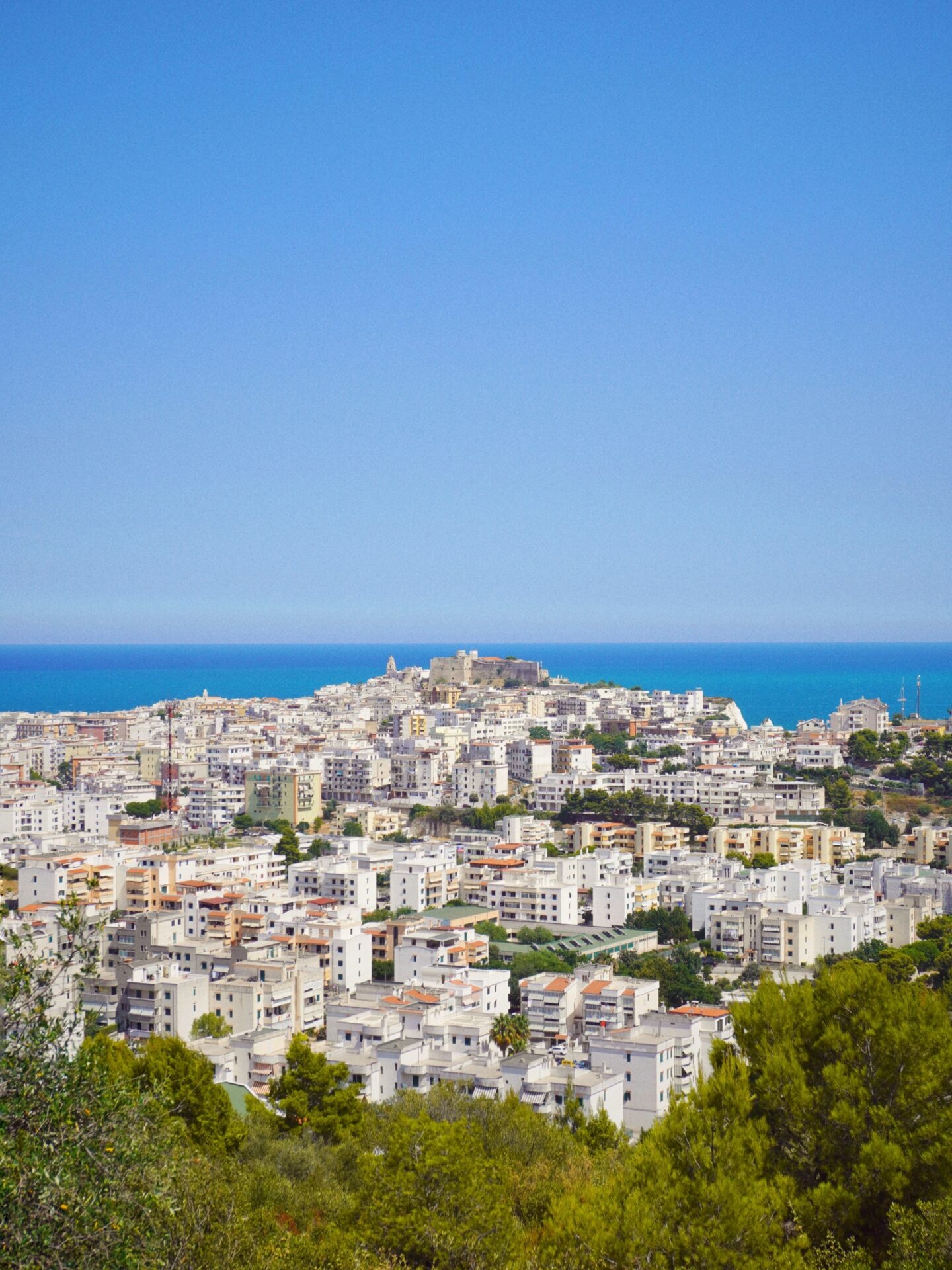
Religious Pilgrimages: San Giovanni Rotondo & Padre Pio
You really can’t talk about Gargano’s culture without bringing up San Giovanni Rotondo. This town draws Catholics from all over because Padre Pio called it home—a 20th-century saint loved for his charity and healing.
I see visitors from every corner of the world here, coming to attend Mass or pay their respects at his tomb.
The Church of Santa Maria delle Grazie feels impressive, and the modern sanctuary by Renzo Piano stands out. Every time I walk inside, there’s this deep sense of peace—pilgrims quietly lighting candles, praying, or just sitting with their thoughts.
San Giovanni Rotondo isn’t just a religious site. Faith really shapes the local identity here, pulling huge communities together year after year.
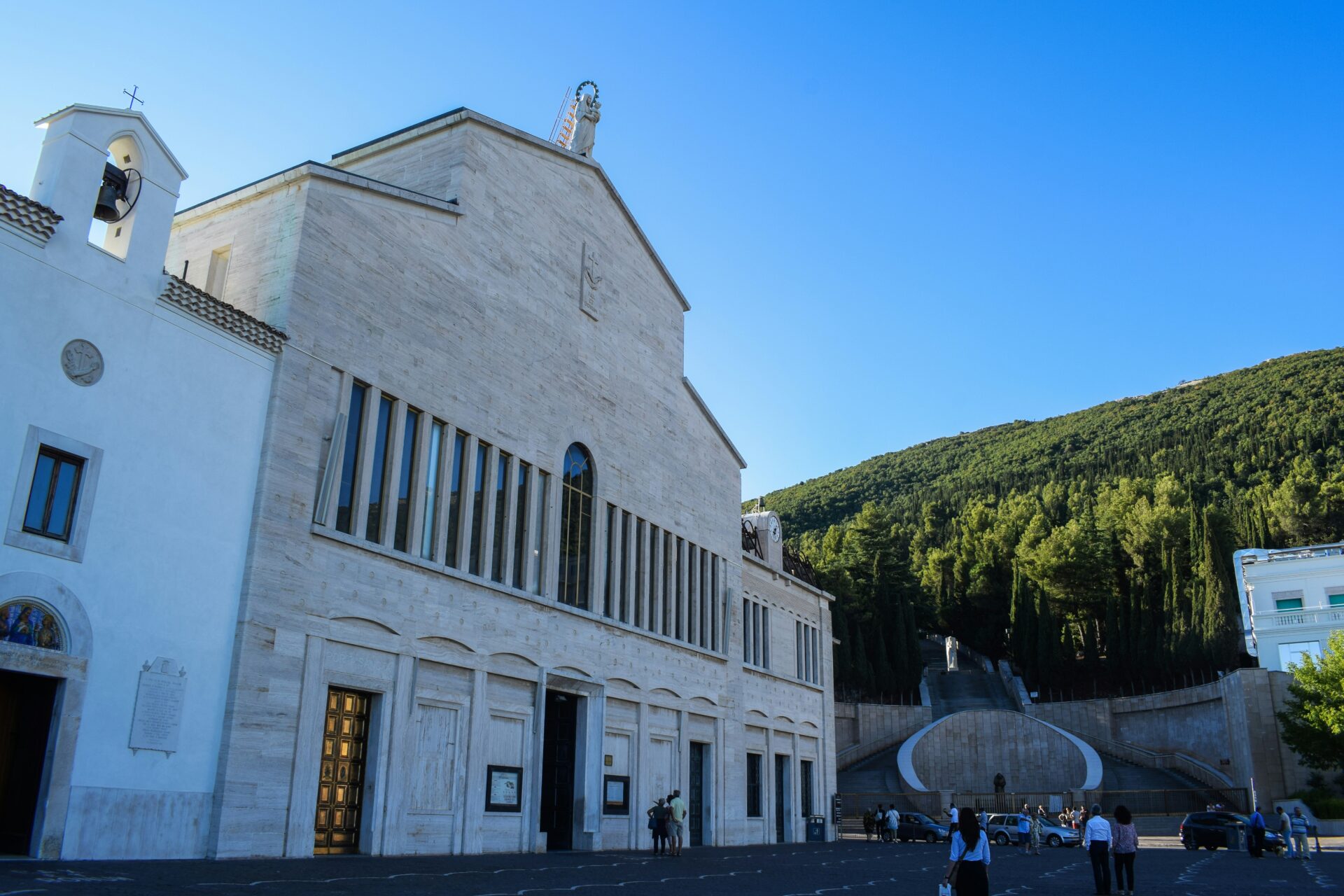
Historic Sites in Foggia and Lucera
Foggia—often called the gateway to Gargano—always surprises me. Its lively streets and mix of old sites give the city real charm.
The Cattedrale di Foggia grabs your attention with its Romanesque facade, and the nearby piazza is perfect for people-watching. I love grabbing a coffee at one of the cafés and soaking up the southern Italian vibe.
Lucera sits just a short drive from Foggia. Ancient Rome still lingers here.
The Amphitheatre of Lucera stands as one of the best-preserved in southern Italy. When I look at it, I can almost see gladiators battling in the arena.
The Swabian-Angevin Castle perches on a hill, offering sweeping countryside views. It’s a spot I always find impressive.
If you’re into history, don’t skip these towns. They each bring something unique, from medieval relics to Roman ruins, and together they show just how deep Gargano’s heritage runs.
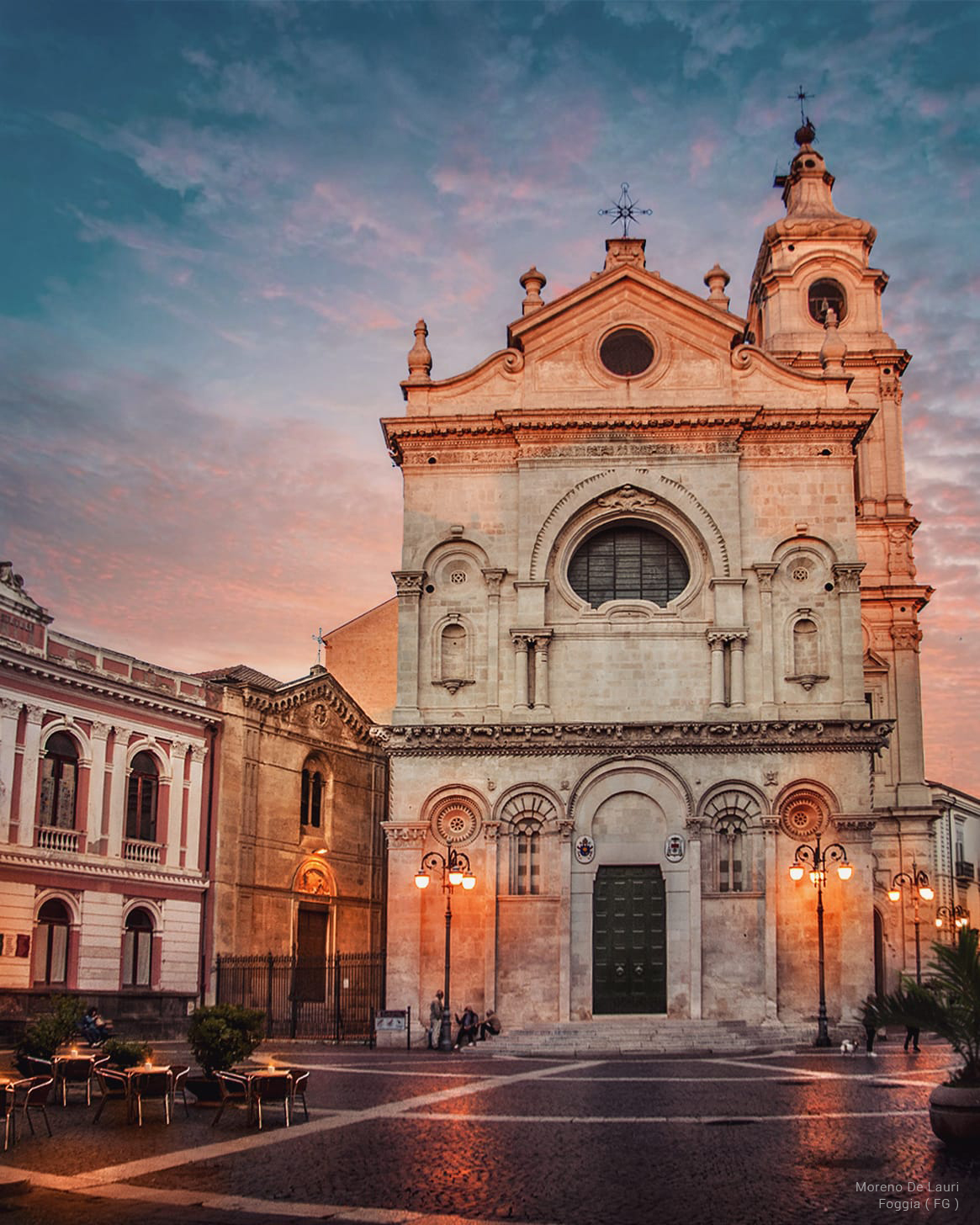
Flavors of Gargano: A Taste of Apulian Delights
Gargano’s flavors stick with me. The land and sea come together in ways that feel unforgettable.
From ancient olive groves to coastal vineyards and fresh seafood, every meal reflects centuries of tradition and a lot of Puglian pride.
Olive Groves and Exceptional Olive Oil
Walking through the olive groves near Vieste, I feel like I’ve stepped back in time. The old, twisted trees stretch as far as I can see.
Locals say some of these trees are hundreds of years old, handed down through families. Harvest season turns into a real event—families gather, picking olives by hand, each basket full of stories.
Gargano’s extra-virgin olive oil glows bright green and smells fresh. I drizzled it over warm bread, and the peppery finish really stood out.
This oil is a staple—locals pour it over grilled veggies, fish, or pasta. I visited a small mill once and watched the pressing up close. Tasting fresh olive oil right at the source? Absolutely worth it.
Here’s a quick comparison:
| Feature | Gargano Olive Oil | Standard Olive Oil |
|---|---|---|
| Color | Vibrant green | Pale yellow |
| Taste | Fruity, peppery | Mild, neutral |
| Source | Ancient local groves | Mixed origins |
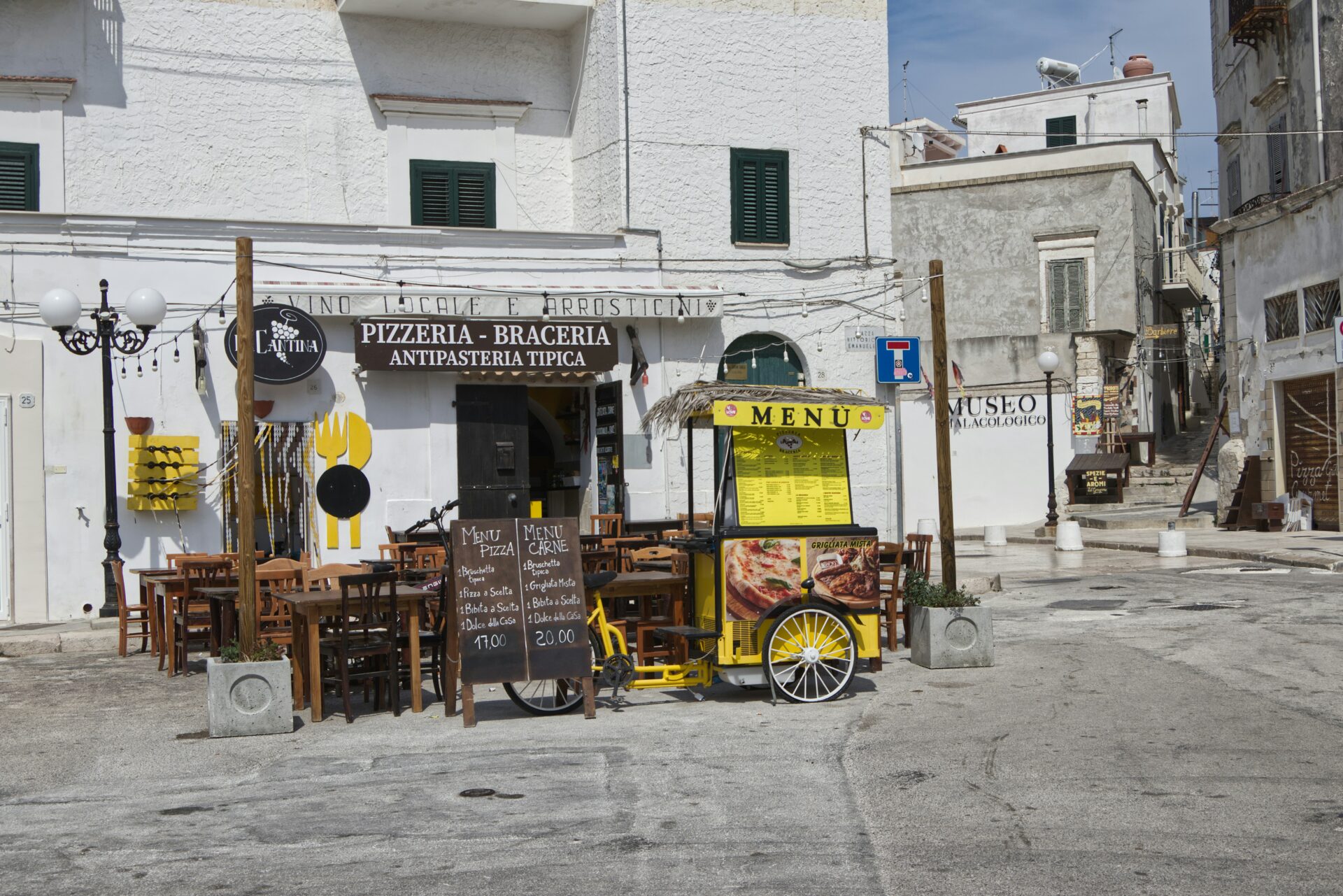
Vineyards and Timeless Wines
Gargano’s hills cradle old vineyards. Some of these family plots go back generations.
Sampling the region’s wines—especially crisp Falanghina and bold Nero di Troia—always feels special. Local winemakers often share stories about their craft and talk about how the sea breeze shapes the grapes.
Tasting wine outdoors, surrounded by vines and ocean views, is hard to beat. In the evenings, I’d pair a local wine with grilled seafood or a wedge of regional cheese.
If you want to feel the place, have a glass here under the sun or stars.
Most recommended Gargano wines:
- Falanghina: Crisp, light, great with seafood
- Nero di Troia: Structured red, perfect for roasted meats
- Bombino Bianco: Fresh, floral, ideal as an aperitivo
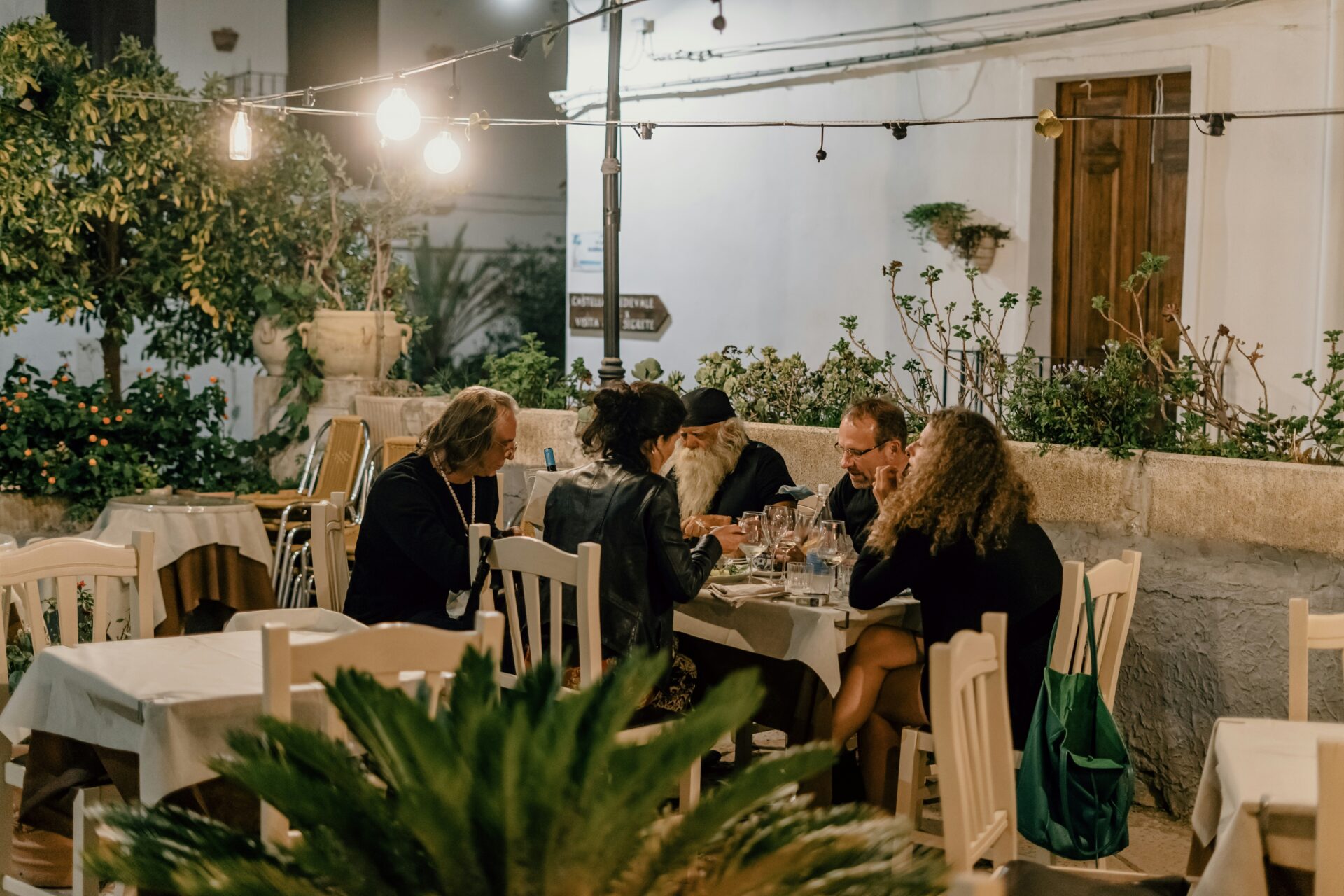
Culinary Traditions and Seafood Specialties
Seafood here isn’t just food—it’s part of daily life. Fishermen head out early and return with the daily catch.
I tried the famous Gargano fish soup, packed with local fish, tomatoes, and olive oil. Octopus pops up everywhere—sometimes in salads, sometimes tucked into warm bread for a quick bite.
Local pettole—those soft, fried dough balls—make a perfect snack, especially during festivals. Tiella, a baked mix of rice, potatoes, and seafood, gets its flavor from fresh herbs and that signature olive oil.
Every meal feels fresh and simple. Quality always stands out.
If you love seafood, eating the catch of the day at a beachside trattoria is a must. The flavors of Gargano feel as genuine as the people making them.
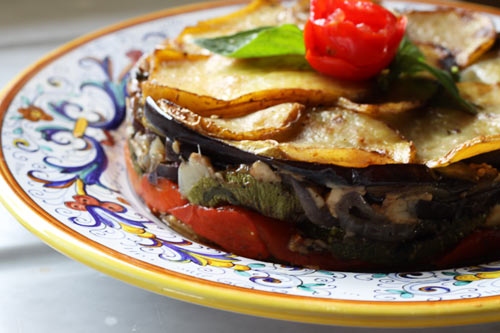
Beyond Gargano: Exploring the Best of Puglia
Puglia overflows with bright seaside towns, historic cities, and some of Italy’s most unique architecture. Gargano gives you wild landscapes, but the rest of the region shows a different side—a blend of ancient stone, whitewashed villages, and sparkling blue water.
Polignano a Mare and Valley d’Itria
Polignano a Mare wowed me with its dramatic beach at Lama Monachile, cliffs towering above. It’s perfect for a swim or a quick photo.
The old center winds with alleys and tucked-away cafés serving fresh fish and local focaccia. I could wander for hours, honestly.
Nearby, Valle d’Itria rolls out hills dotted with olive groves and vineyards. Towns like Locorotondo and Cisternino stay quiet, full of white buildings and peaceful squares.
I love strolling these villages in the evening, especially when summer festivals light up the streets.
Driving between towns is easy, and every stop brings something new—handmade pasta in Martina Franca, bustling markets in Ceglie Messapica, or olive oil tastings out in the countryside.
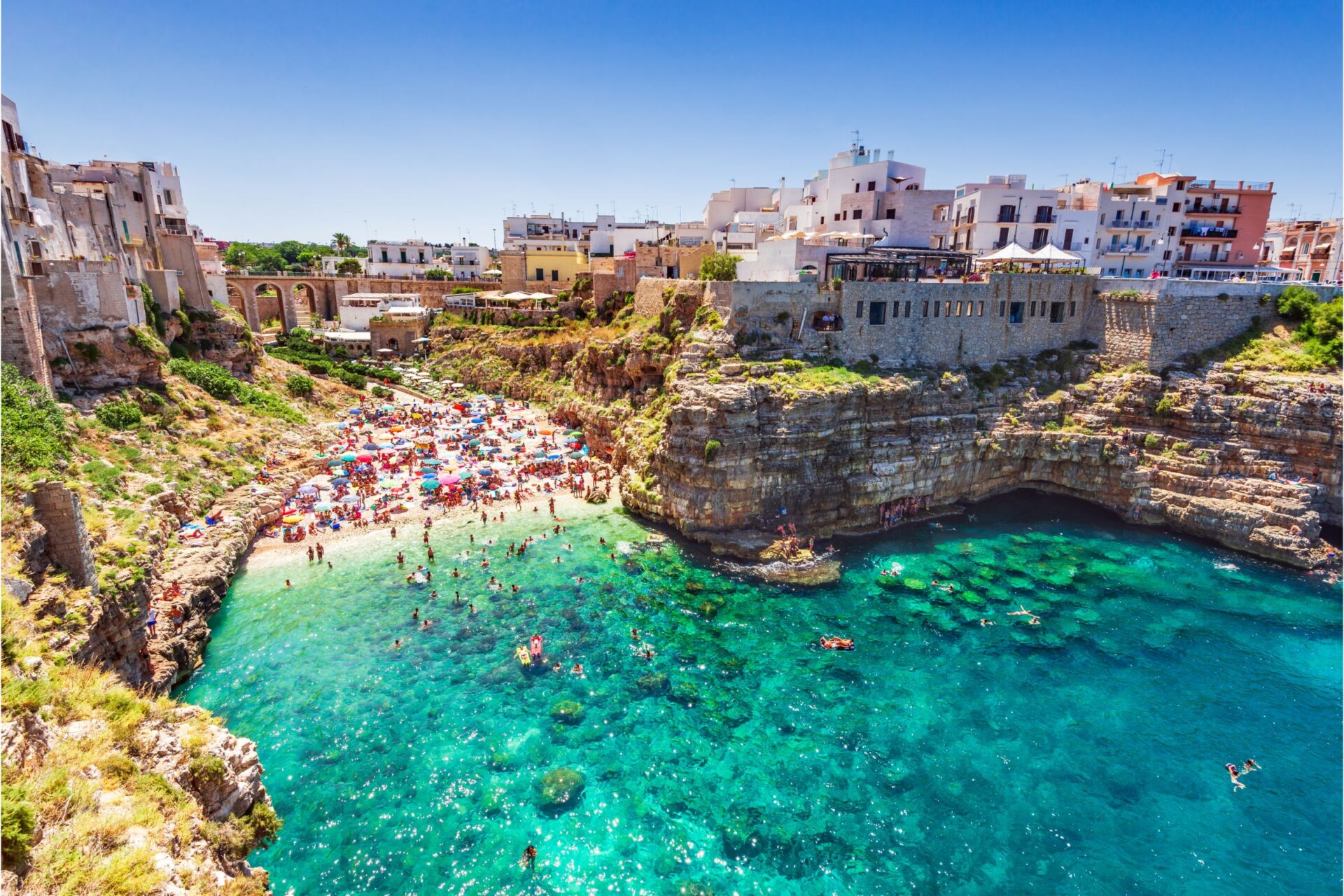
Lecce, Otranto, and Salento
Lecce—some call it the “Florence of the South”—really shines with its baroque architecture. When I wander Piazza del Duomo or the streets near Santa Croce, golden stone and mosaics catch the afternoon sun.
Cafés here make a great spot to pause for coffee and people-watch.
Otranto sits right on the Adriatic, mixing history and sea views. The ancient castle and cathedral’s mosaic floor are highlights, but I always take time to stroll along the city walls and look out at that turquoise water.
Further south, Salento boasts beaches on both the Adriatic and Ionian sides. Santa Maria di Leuca stands out for its lighthouse and where the two seas meet.
Santa Maria al Bagno and Gallipoli buzz with life in summer—clear water, fresh seafood by the harbor, and a lively atmosphere.
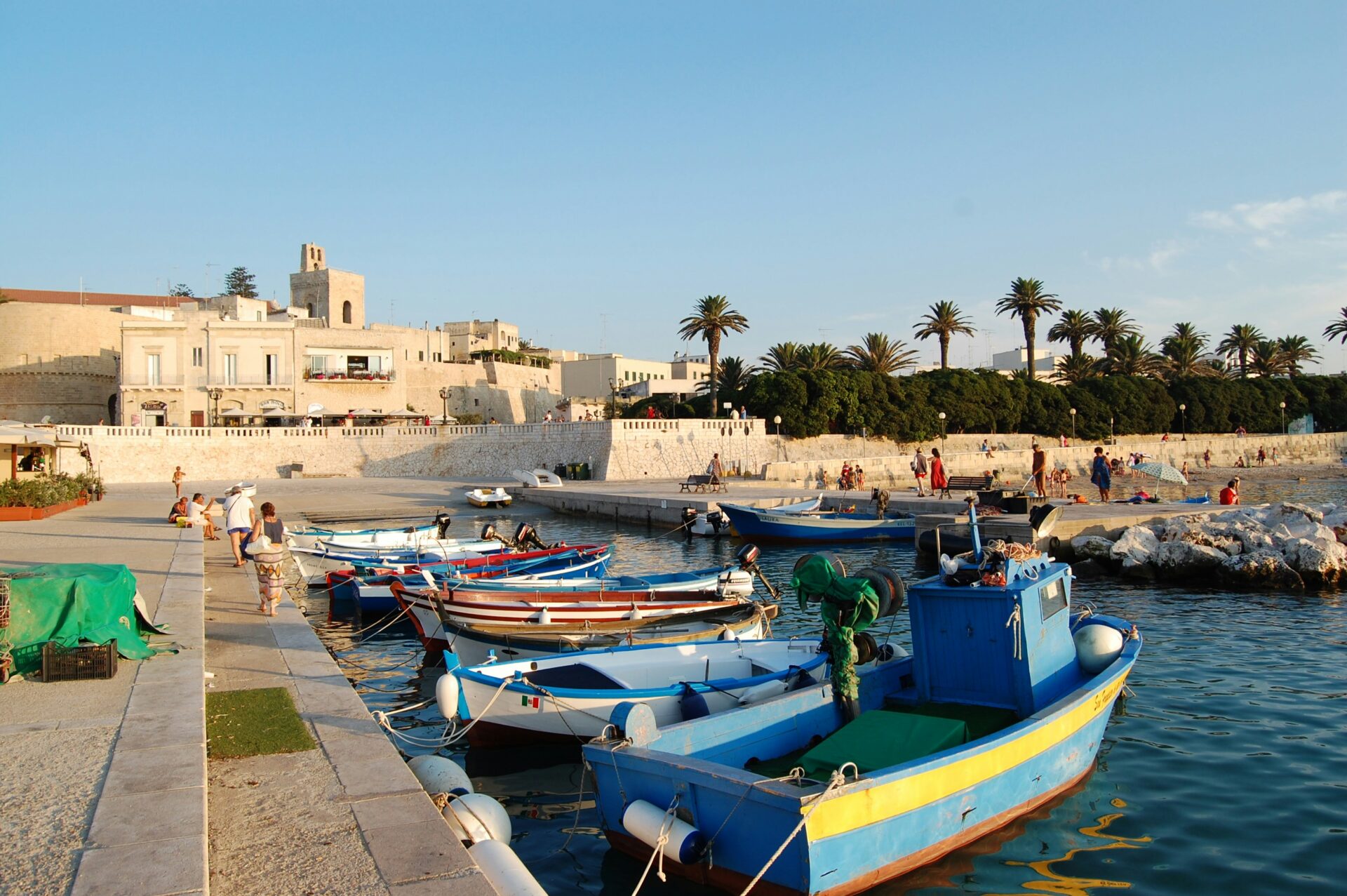
Alberobello and the Unique Trulli Houses
Alberobello is famous for its trulli houses—those stone huts with cone-shaped roofs that look straight out of a storybook. I wandered through Rione Monti, where hundreds line the narrow lanes.
It almost feels otherworldly.
Visiting a trullo museum gives you a peek into how people lived here, and some houses open their doors for visitors. I even stayed overnight in a trullo hotel once—definitely a unique experience.
Nearby Noci and the villages of Valle d’Itria have scattered trulli, but Alberobello has the highest concentration.
Shops in town sell local crafts, olive oil, and taralli crackers—great for souvenirs or just to snack on during your trip.
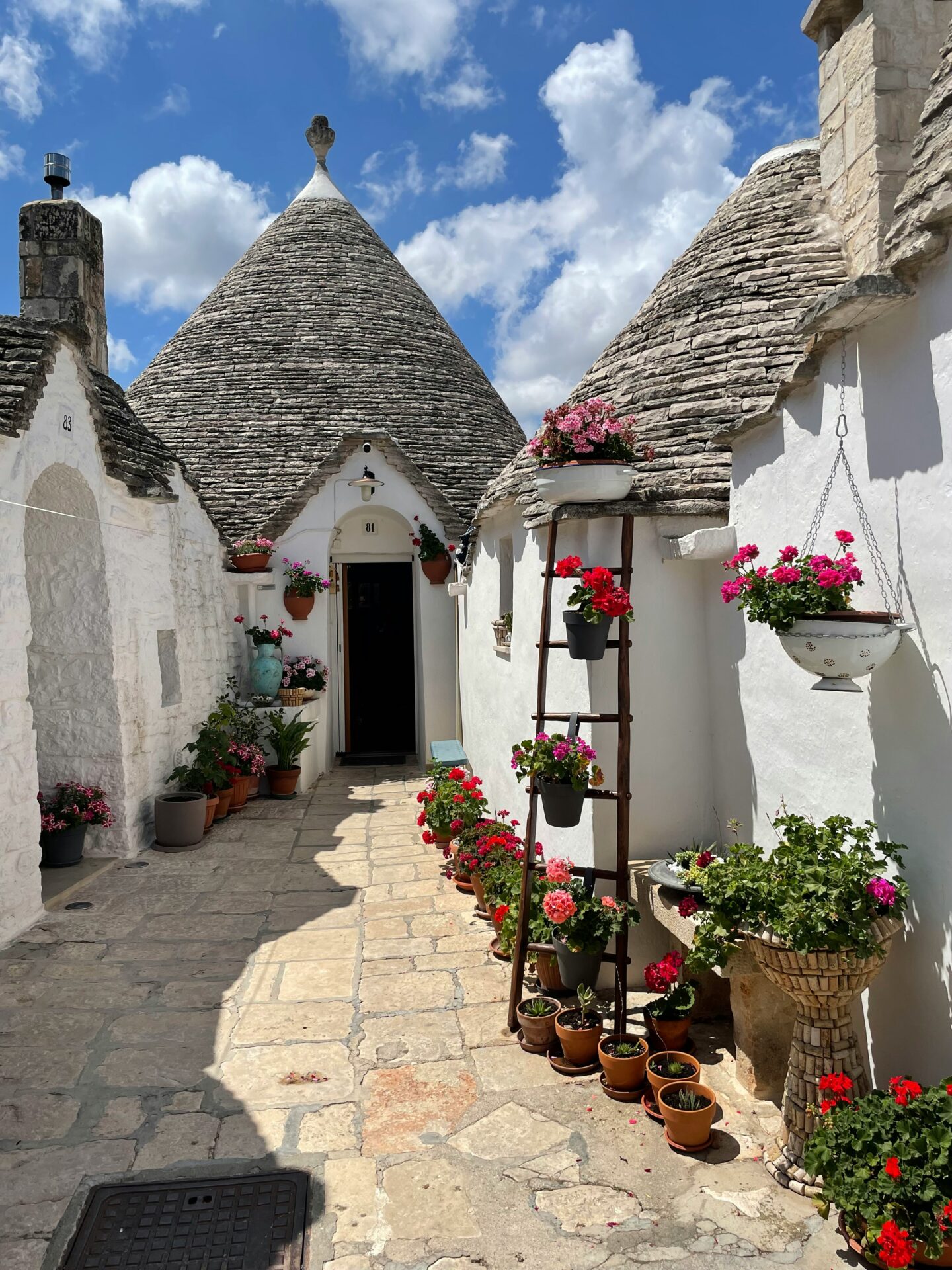
Matera, Ostuni, and Nearby Highlights
Just across Puglia’s border, Matera grabs your attention with its stone cave dwellings (the Sassi) and stories literally carved into the cliffs.
As I wandered through the old neighborhoods, I found rock churches tucked away, winding little paths, and views that probably haven’t changed much in hundreds of years.
It’s clear why UNESCO put Matera on their World Heritage list.
Ostuni, known as the “White City,” perches on a hill above olive groves and the Adriatic coast.
Its old town twists into a maze of whitewashed houses and tiny shops.
When the sun sets, the buildings just glow, and a cool sea breeze sweeps through the main square.
A lot of travelers mix in stops at Brindisi, Bari, or even Taranto if they’ve got the time.
Each city brings something different—Bari’s old streets and busy port, Brindisi’s Roman columns, or Taranto’s ancient history.
You can even squeeze in quick day trips to spots like Castro or Barletta-Andria-Trani.
If you’re into road trips, you’ll have no trouble connecting these places and getting a real taste of southern Italy.

